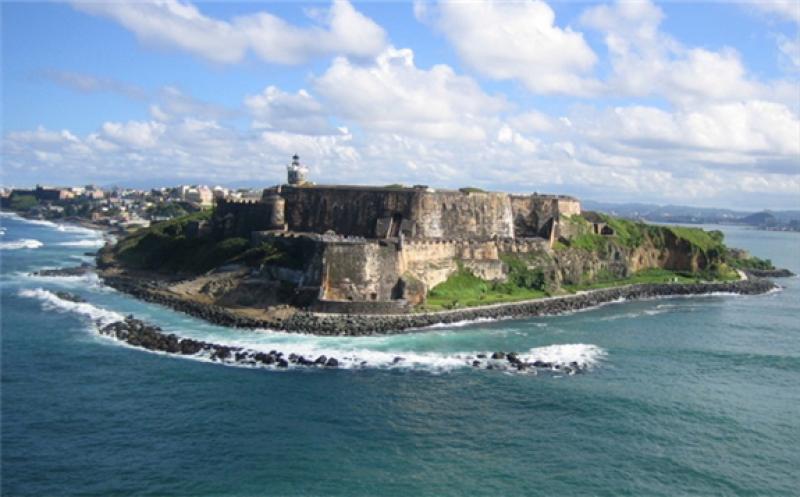Advanced nuclear reactors can meet Puerto Rico's unique energy needs by complementing renewable sources with zero-emission electricity resilient to extreme natural events, a preliminary feasibility study has concluded. The study - conducted by Puerto Rican-led not-for-profit organisation the Nuclear Alternative Project (NAP) - was funded by the US Department of Energy (DOE).

Puerto Rico - officially, Commonwealth of Puerto Rico - is an unincorporated territory of the USA and is located in the northeastern Caribbean. Puerto Rico currently generates 98% of its electricity from imported fossil fuels, and its power plants, built in the late 1960s, experience outage rates 12 times higher than the US average. Within the next decade, Puerto Rico proposes a transition from a centralised system dependent on fossil fuels to a distributed system centred on clean energy. Its legislature in 2018 passed a bill calling for an investigation into the possibility of building nuclear power plants on the island, which suffered widespread outages following Hurricane Maria in 2017.
NAP, founded in 2016 by Puerto Rican engineers in the US nuclear industry to inform and advocate for small modular reactors (SMRs) and microreactors in Puerto Rico, proposed a feasibility study to the DOE Office of Nuclear Energy, to evaluate the economic, safety and social impact of deploying microreactors and SMRs on the island. The study began last October, having received receipt of a "notice to proceed" from the US DOE's Idaho National Laboratory. The findings of that feasibility study were released by NAP yesterday.
The Integrated Resource Plan proposed by the Puerto Rico Electric Power Authority (PREPA) calls for Puerto Rico to have new solar, storage and natural gas capacity in the order of 3000 MWe by 2025. The Puerto Rico Renewable Portfolio Standard mandates 40% renewable energy generation by 2025, 60% renewables by 2040 and 100% renewables by 2050.
"Only nuclear reactors can complement the intermittency of renewable power sources with zero-emission baseload power generation," the feasibility study said. It found small nuclear reactors can integrate with renewable energy and the existing transmission and distribution grid as well as with a decentralised system envisioned for the island.
The delivery of electricity from SMRs and microreactors can be cost competitive when compared with natural gas generation from mobile gas units and combined cycle gas turbine units proposed by PREPA as part of the island’s fleet replacement, the study notes. The report proposes a set of legislative amendments to maximise the competitiveness of electricity production by SMRs and microreactors in Puerto Rico. The design and siting regulations of advanced reactors allow this technology to withstand severe natural events such as hurricanes and earthquakes, the study found.
Implementation of advanced reactors will not result in the long-term storage of nuclear waste in Puerto Rico, the study said. Like all US nuclear power plants, it is expected that the Puerto Rico nuclear plant's low-level waste will be shipped to a US licensed low-level waste disposal facility and high-level used fuel safely stored on site and later shipped to a long-term high-level waste storage facility in the US mainland.
"Advanced nuclear reactors provide a combination of reduced electricity costs, zero-emission baseload electricity and minimal dependency on fuel imports that can lead to a strong degree of energy security and reliability much needed for a robust manufacturing and industrial sector in Puerto Rico," the report says. "A strong local industry translates into job creation, economic growth, additional exports, and global competition and innovation expansion among many others."
The study found high public interest in the deployment of nuclear reactors on Puerto Rico. Over 3000 residents were surveyed around the island, with 94% saying they are interested in continuing to explore the option of nuclear energy for the island. However, it said there is a public misconception that nuclear power is prohibited in Puerto Rico.
"This notion is based on an early 1990's Executive Order that stated nuclear power was not a viable alternate energy source at the time, but not that nuclear power plants were prohibited," the study said. "Since that Order, no further Executive Branch statements have been issued on the viability of nuclear energy, nor have any of the existing laws that permit nuclear power businesses in the Island been amended to prohibit nuclear energy in the Island."
It concludes: "The challenges identified for deployment of advanced reactors in Puerto Rico are policy, engineering and public engagement related. Specific actions to address all of these can be implemented in a timely and inclusive manner with the people of Puerto Rico."
NAP said it is now preparing for phase two studies which will focus on the viability of constructing small reactors at specific locations on the island and an education campaign for the people of Puerto Rico. The suitability of sites for advanced nuclear reactors in Puerto Rico will be performed in accordance with US Nuclear Regulatory Commission regulations.
